Figure 1 shows the block diagram of the clock. Further details are shown in the attached file schematics.
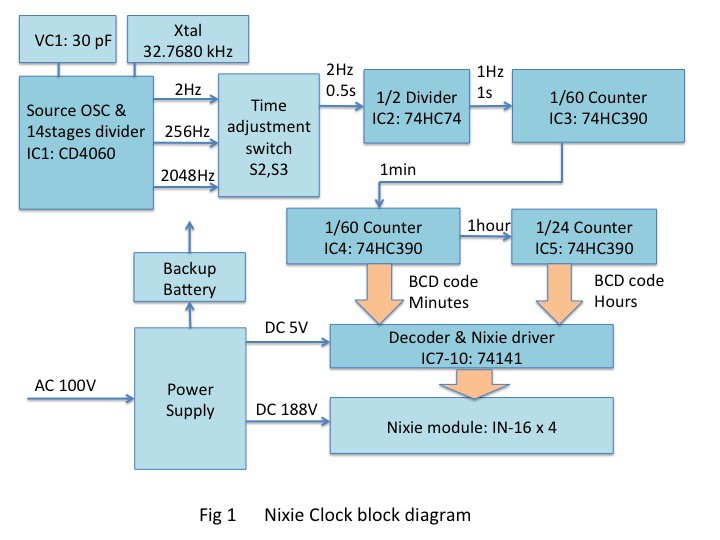
1. Source oscillator
The source oscillation is performed using an inverter in a CMOS logic IC1(CD4060) and a 32.7680 kHz crystal. Fine-tuning of frequency is done with VC1.
2. Frequency divider
The source oscillation frequency is divided down to 2 Hz (x1) by the 14-stage frequency divider inside the IC1(CD4060). Here, 2048 Hz (x1024) and 256 Hz (x128) switched from 2 Hz signal by a push-button switch when setting the time. A 2 Hz signal is divided by IC2(74HC74) to get a 1 Hz (1 s) pulse.
A 1/60 counter configured with IC3(74HC390) makes it an 1 s pulse into an 1 minute pulse. Then the 1 minute cycle pulse is counted until 1 hour cycle by a 1/60 counter configured of IC4(74HC390). In addition, the pulse of one hour cycle is counted by a 1/24 counter configured of IC5(74HC390).
3. Nixie driver
The minute and hour BCD codes output from the counter are input to IC7-10 (74141) BCD-to-Decimal Decoder/Driver.
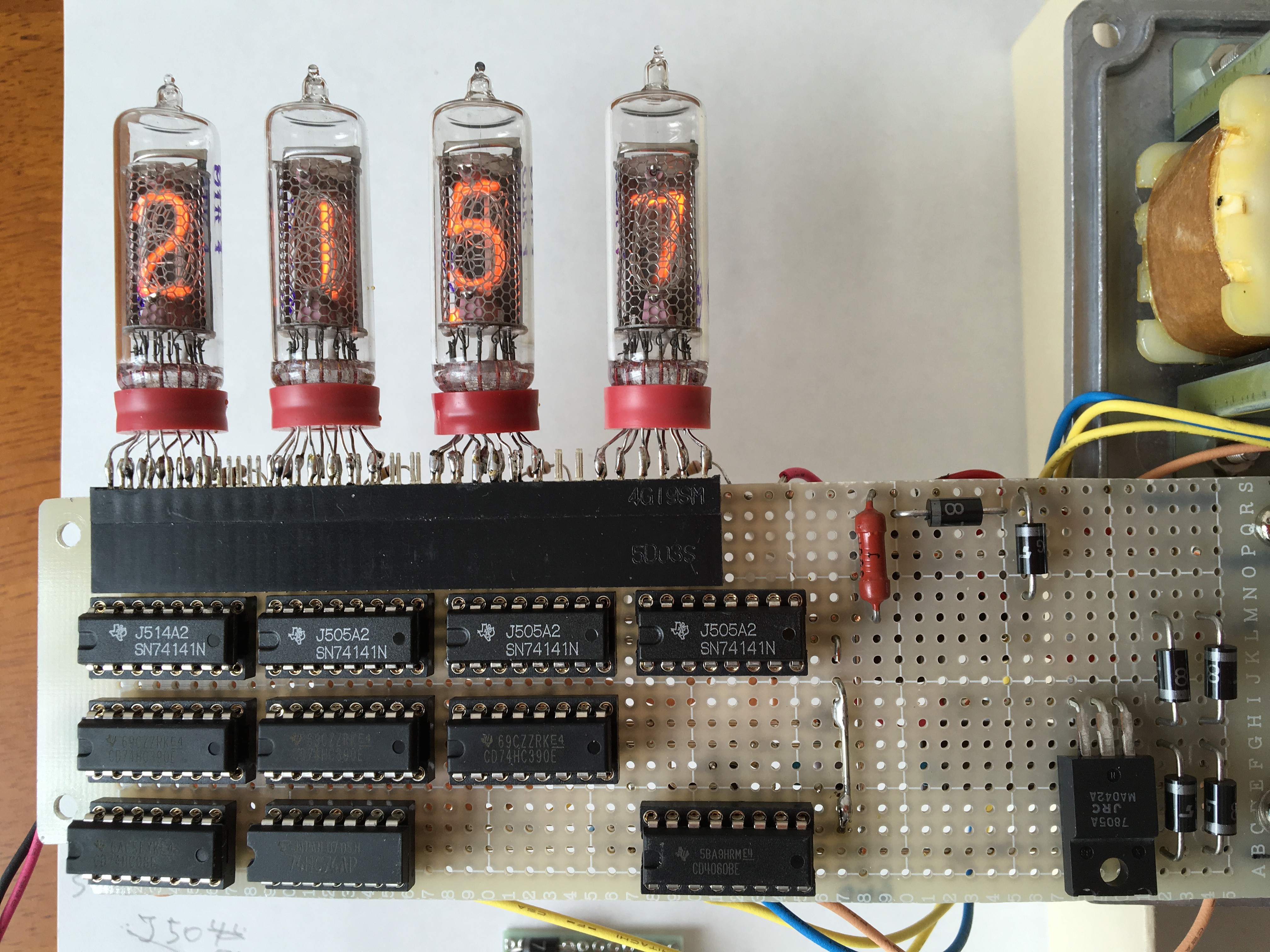
4. Nixie module
As shown in the photo, four nixie tubes were soldered to a pin header to make a module. The pin header is inserted into the header connector on the board. This allows the Nixie tubes to be easily replaced.
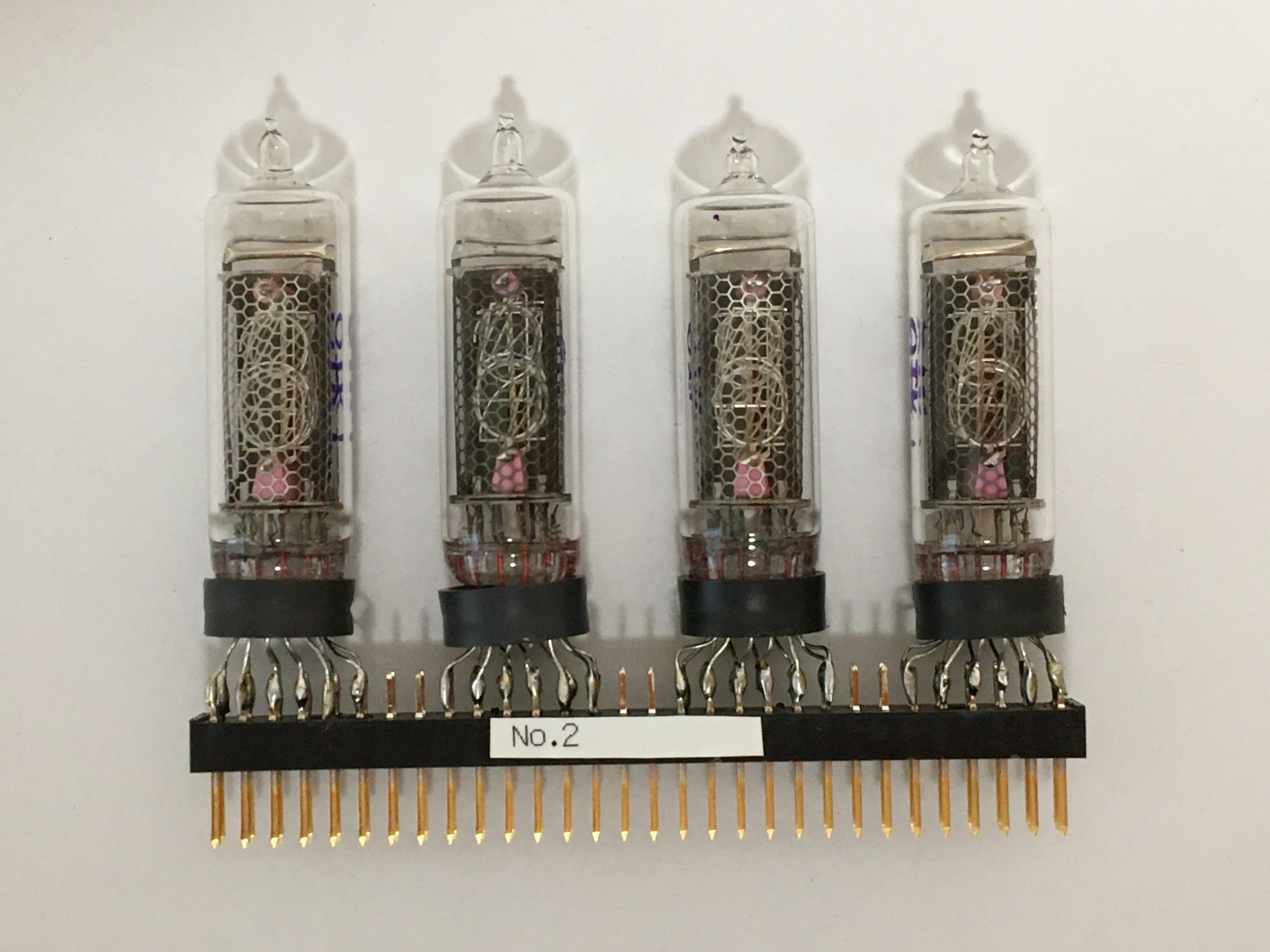
5. Power supply
The 100 V AC power from the AC inlet is converted to 6.3 V AC by the transformer T1 through a fuse. This was then bridge rectified to generate 5 V DC for the IC circuit by the series regulator IC11(7805). The high voltage for the Nixie tubes is 6.3V AC converted to 100V AC by the transformer T2, which is then voltage-doubling rectifier to produce 188V DC. A 50k Ohm resistor was connected to the anode of the Nixie tube, and the anode current was set to a small 1.1mA.
6. Battery backup
IC1-IC6 are backed up by 3.6 V, 70 mA h NiMH batteries so that this clock will not lose time even when the AC power is turned off.
7. Enclosure
The clock uses an 18 cm x 12 cm x 5 cm aluminum die-cast enclosure. This is because to ensure safety in long-term continuous operation.
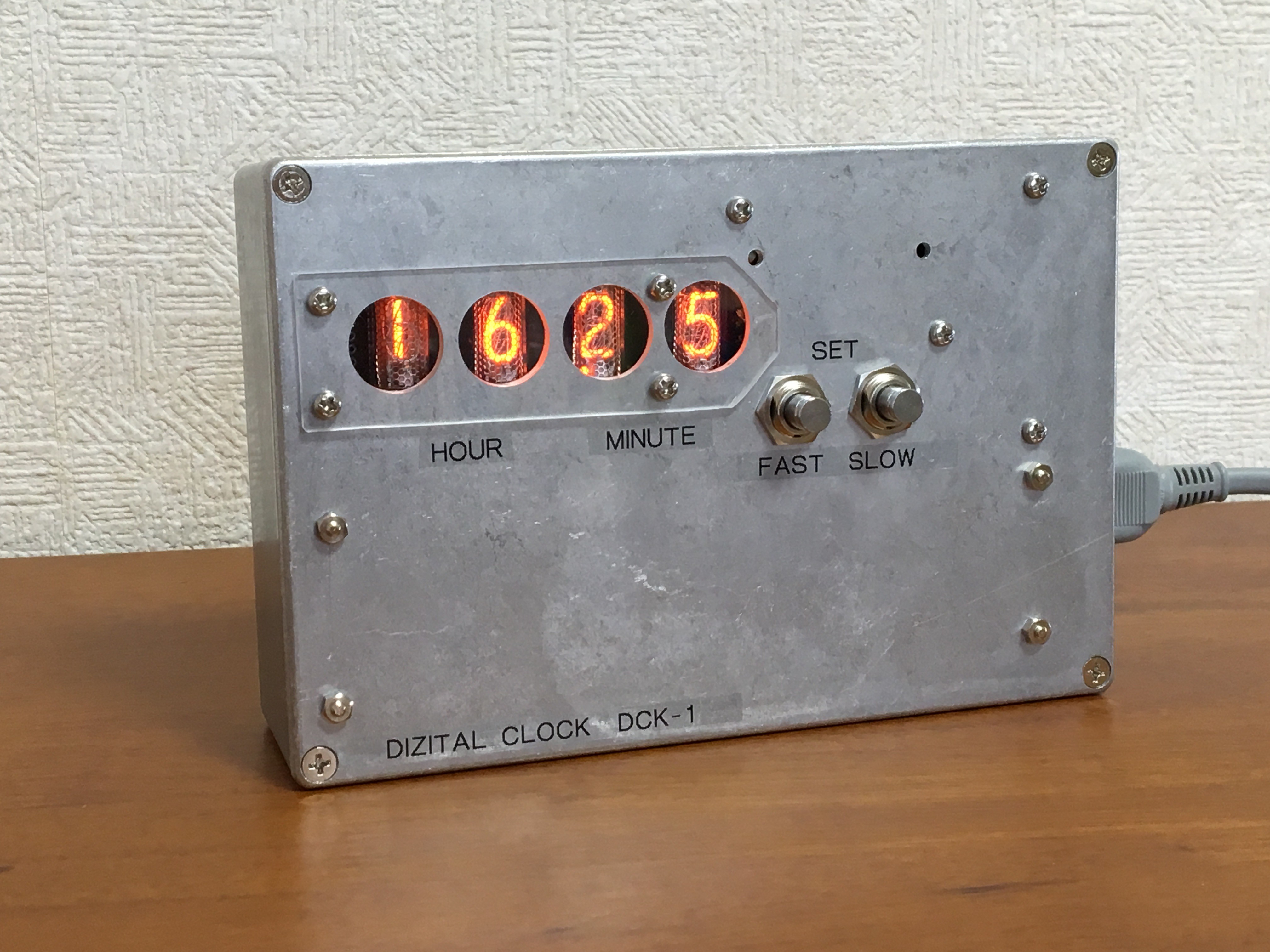
8. Results
Oscillator adjustment:
I adjusted the frequency to 32.7680 kHz with a frequency counter. If the frequency is off by 0.1 Hz, the error of the clock will be 0.26 s par day.
Time deviation during a year:
The error in this clock over a long period of time is due to the temperature characteristics of the source oscillator crystal. This clock has used in an environment with a minimum temperature of 10 degrees Celsius in winter and a maximum temperature of 35 degrees Celsius in summer. It keeps the time lag to within plus or minus 30 seconds throughout the year.
Nixie Tube Life:
The photograph the display status of the Nixie tube after 28,400 hours (3 years and 3 months) of continuous operation. Some of the characters ‘4’, ’9’, ’8’ are a little chipped, but still in the practical range.
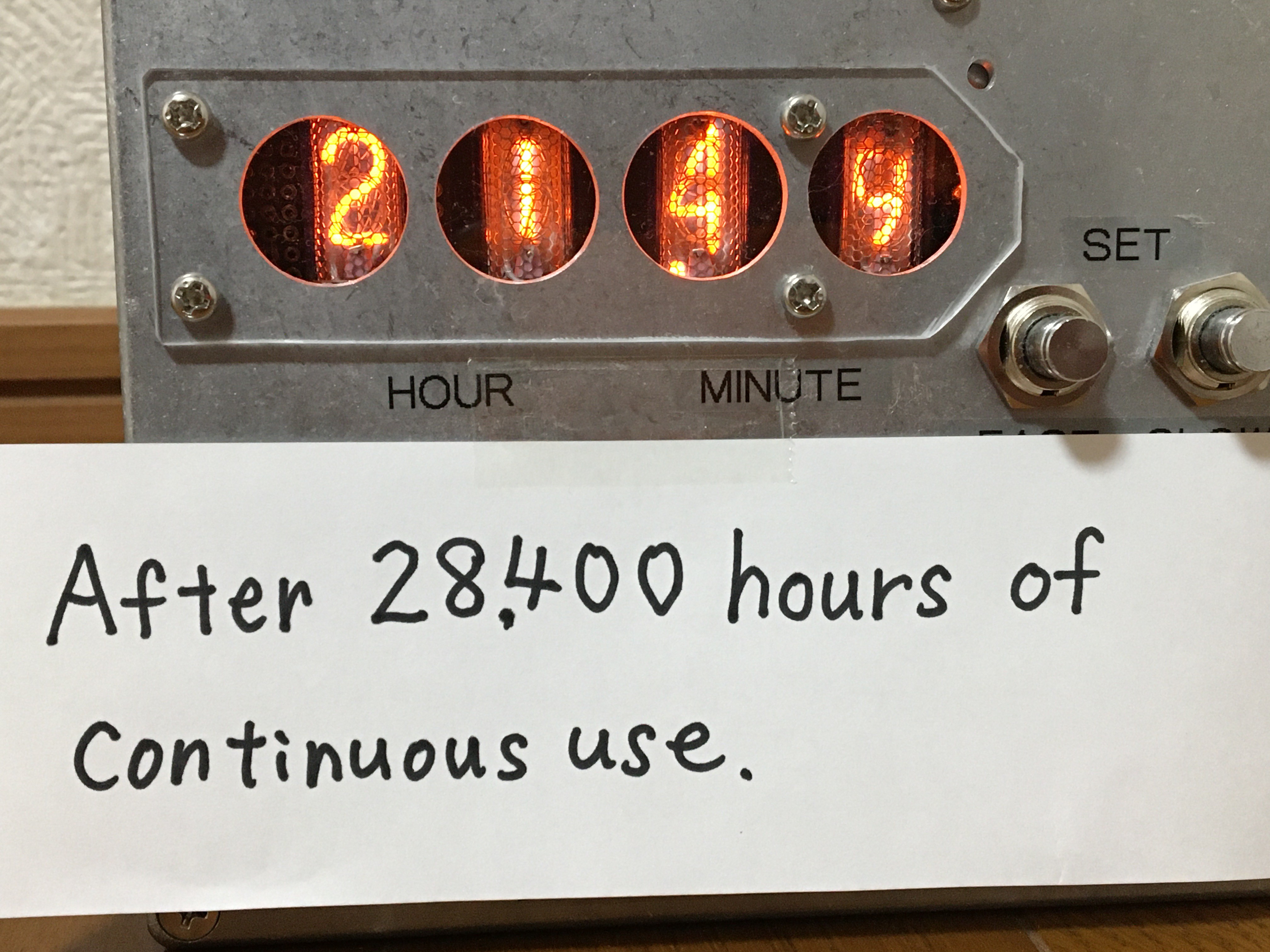
The next photo shows the condition of the display after 50,900 hours (5 years and 9 months). At this point, the display characters had completely lost their shape, so the nixie tube module was replaced with a spare new one. It had a longer lifespan than first assumed.
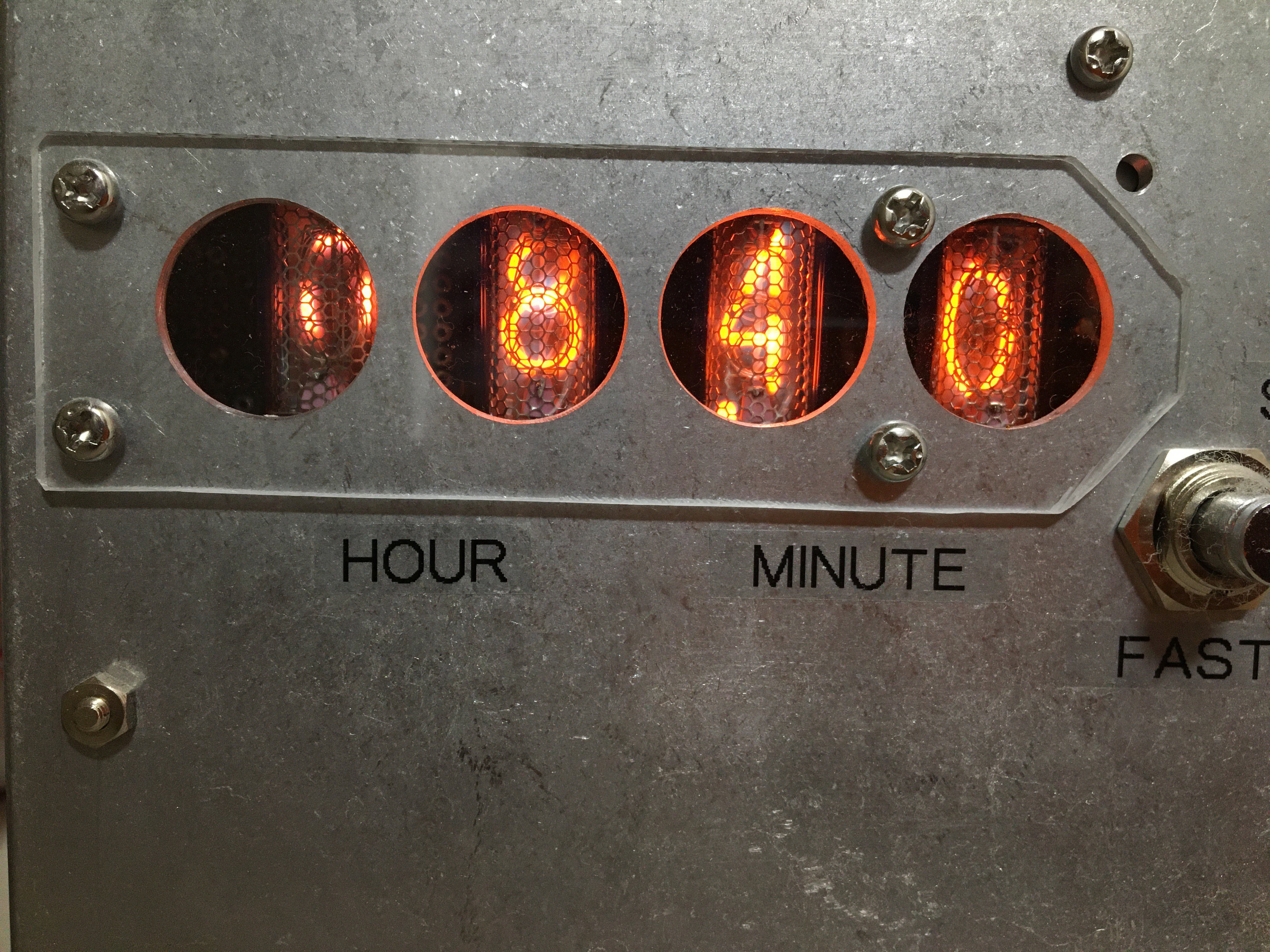
Video:
The following video shows the time setting. There is no audio commentary, so please turn on subtitles.
 Mitsuru Yamada
Mitsuru Yamada
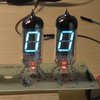



I really like the circular windows for the nixies. It reminds me of what the ticket vending machines for the public transport in Zurich used to look like.